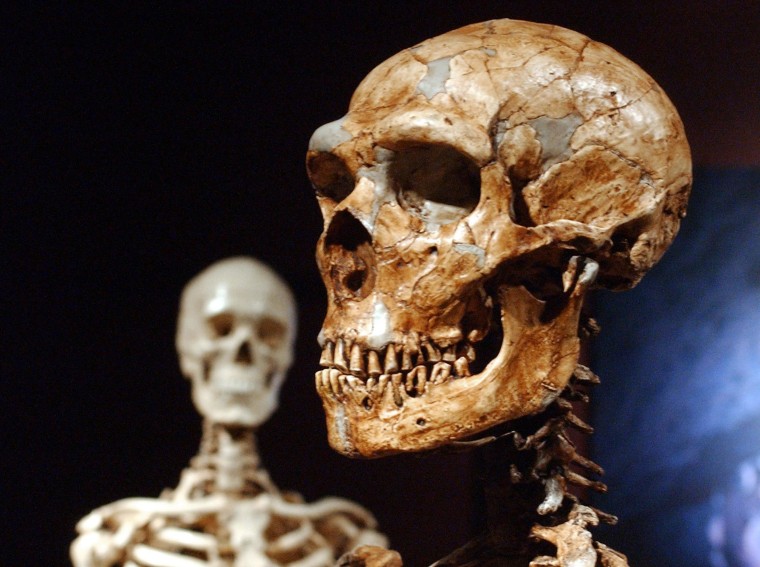No offense, but your ancestors probably were no brighter than a Neanderthal.
That's the message a pair of researchers delivered on Wednesday after analyzing archaeological evidence detailing the capabilities of Neanderthals, our closest extinct human relative, compared to the early modern humans who first crossed their path about 40,000 years ago.
The researchers said the findings show Neanderthals were anything but the incompetent dimwits that they are often deemed.
These include: complex hunting methods that required a group effort and planning in advance; likely use of spoken language; use of pigments probably for body painting; use of symbolic objects like eagle claws and perforated animal teeth, probably for pendants; and the sophisticated use of fire.
"We found no data in support of the supposed technological, social and cognitive inferiority of Neanderthals compared to their modern human contemporaries," said Wil Roebroeks, an archaeologist at the Leiden University in the Netherlands.
"The vision of primitive club-wielding brutes who in the end vanished when superior modern humans entered their world has been obsolete for a long time already," Roebroeks added.
Evidence of interbreeding with humans
Neanderthals prospered across Europe and Asia from about 350,000 to about 40,000 years ago, but disappeared after early modern humans trekked into Europe from Africa.
Many scientists had postulated that Neanderthals were too stupid, clumsy and incompetent to survive a competition with the smart and inventive modern humans who invaded their territory.
Paola Villa, a curator at the University of Colorado Museum of Natural History, said the truth is far more complex.
Genetic evidence shows there was interbreeding between Neanderthals and the early modern humans, Villa noted.
"In a certain sense, they are not completely extinct because some Neanderthal genes are present in our genome."
Male offspring resulting from inter-breeding were likely infertile, which may have contributed to a Neanderthal population decline, Villa said. The remnants of the Neanderthal population eventually may have been assimilated into the larger modern human population in a process that unfolded over a period of a few thousands of years, she added.
"In a certain sense, they are not completely extinct because some Neanderthal genes are present in our genome," Villa said.
There were some anatomical differences between the two species: the robust, large-browed Homo neanderthalensis and the sleeker Homo sapiens. For example, the bodies of Neanderthals were shorter and stockier than modern humans, and the middle part of the face was bigger, with a larger nose.
Writing in the scientific journal PLOS ONE, Villa and Roebroeks highlighted some of the capabilities of Neanderthals.
They pointed to archaeological sites in Europe such as one a in southwestern France, where Neanderthals probably herded bison to their deaths by leading them into a sinkhole. At a Channel Islands site, fossil remains of mammoths and woolly rhinos that most likely had been the target of an organized hunt by Neanderthals were found at the base of a ravine.
